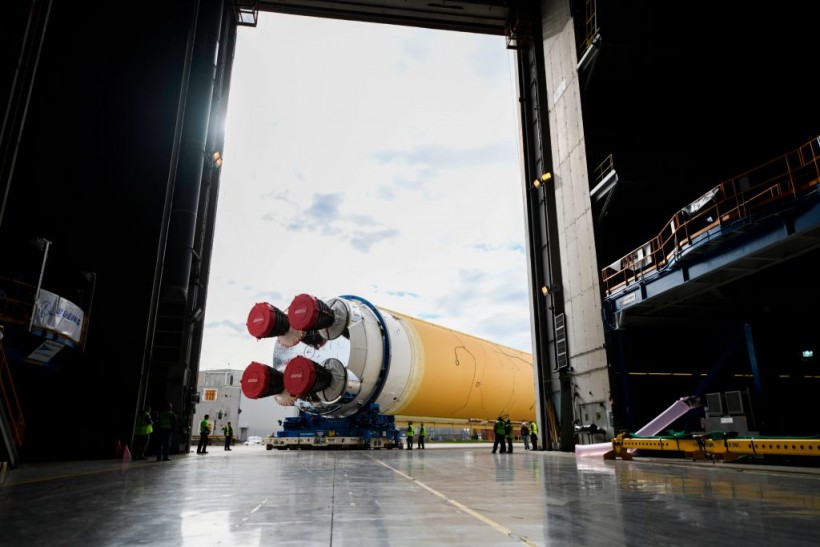NASA has replaced the problematic parts and is preparing to deploy the 322-foot-tall Artemis I rocket to Kennedy Space Center's Flight Pad 39-B for a dress rehearsal next month, which may pave the way for a possible March lunar launch.
Last week, mission management revealed that one of the four repurposed space shuttle program engines used to power the core stage of the Space Launch System rocket that would deliver the uncrewed Orion spacecraft on a trip to orbit the moon and return had been safely replaced.
According to an update on NASA's Artemis I blog, the crew completed various tests to verify the enormous core stage is ready to move to the launch pad. The four-engine controllers were all turned on and worked well.

This NASA photo released on January 6, 2020, shows NASA's powerful new rocket, the Space Launch System (SLS), which will send astronauts a quarter-million miles from Earth to lunar orbit at the Michoud Assembly Facility in New Orleans, Louisiana. - The agency is committed to landing American astronauts, including the first woman and the next man, on the Moon by 2024. Through the agency's Artemis lunar exploration program, we will use innovative new technologies and systems to explore more of the Moon than ever before. On January 1, 2020, NASA Administrator Jim Bridenstine tweeted: "Making progress! The massive @NASA_SLS core stage is moving to Building 110 at the Michoud Assembly Facility in Louisiana. There it will be readied for the Pegasus barge and its trip to @NASAStennis. Thank you to the @NASA team for working through the holidays!"
NASA's Artemis 1 Moon Mission's Upcoming 'Wet Dress Rehearsal'
The Orion spacecraft's crew access arm was retracted and extended on Tuesday to ensure optimal operation, NASA said per Space.com.
The arm is designed to provide astronauts safe access to the SLS rocket during flights and technicians during assembly and testing operations in NASA's Kennedy Space Center in Florida's Vehicle Assembly Building (VAB). In terms of the SLS, NASA said that an "engineering test series" on the rocket core stage, which is also housed inside the VAB, had been completed.
The team's first mission was to repair and test one of the four RS-25 engine controllers, after which they checked that the flight computers, engine controllers, and core stage systems were all communicating and functioning properly. The engines were also "gimbaled," or gently moved, to replicate motions they would make during flight.
ALSO READ: New NASA Rocket Fixed; SLS Designed to Take Astronauts to the Moon
The crew expects to conduct its second countdown test "to show the ground launch software and ground launch sequencer, which checks for the vehicle's health and condition while at the pad," according to NASA. During the simulated countdown, the purpose is to ensure that Orion and SLS respond as predicted.
The "wet dress rehearsal" rehearsal on the launch pad is scheduled in February.
The stacked spacecraft and launcher will be moved to a neighboring launchpad once the countdown test and final checkouts are completed, according to the CSA. Still, no date for the transfer has been set.
Launch Windows
After the launch pad rehearsal, Orlando Sentinel said NASA would transport it to the VAB for more testing before approving it for launch, which may occur as early as March.
Each month, NASA has a complicated set of launch windows. In December, NASA said it was looking into launching either the tail end of the March window, which runs from March 12-27, or the April window, which runs on select days from April 8-23. May 7-21, June 6-16, and June 29-July 12 are the next available dates.
The mission might last four or six weeks, depending on when it begins. The objective is to launch Orion 280,000 miles into space, which is 40,000 miles beyond the moon, further than any other human-rated spacecraft has ever gone.
RELATED ARTICLE: Does NASA Have Enough Astronauts to Complete Its Missions in ISS? Inspector General Gives Warning
Check out more news and information on Space in Science Times.














